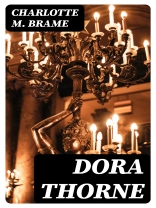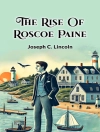In ‘Dora Thorne, ‘ Charlotte M. Brame explores themes of love, identity, and social class through the life of its titular character, who must navigate the complexities of Victorian society. Brame’s narrative is rich with vivid descriptions and psychological depth, showcasing her adeptness in character development and emotional resonance. The novel deftly blends melodrama with realism, offering insights into the societal constraints of the era while maintaining a gripping plot that keeps readers enthralled. Brame’s writing exhibits a keen understanding of the struggles faced by women of her time, making the text both a reflection of the Victorian age and a timeless exploration of personal ambition and societal expectation. Charlotte M. Brame was an influential figure in the 19th-century literary scene, known for her prolific output of novels that often centered on female protagonists. Born in an era marked by rigid social structures, Brame drew from her own experiences and observations to craft characters that challenged the status quo. Her engagement with issues of gender, class, and morality positioned her as a precursor to modern feminist literature, reflecting her belief in the transformative power of stories. ‘Dora Thorne’ is highly recommended for readers interested in Victorian literature, women’s studies, or anyone concerned with the human condition. Brame’s nuanced portrayal of her protagonist’s struggles against societal norms invites readers to reflect on their values and the nature of personal freedom, making it a significant and thought-provoking addition to any literary collection.
关于作者
Charlotte Mary Brame (1836-1884), often publishing under the name Charlotte M. Brame, was a prolific English novelist of the Victorian era. She is best known for her romantic fiction, characterized by emotional narratives and intrigue. Brame’s work often depicted heroines in situations of personal distress, overcoming obstacles to find love and contentment, a theme well encapsulated in her successful novel ‘Dora Thorne’ (1877). Coming from a humble family background in Hinckley, Leicestershire, Brame began writing stories and poetry at an early age as a means of financial support for her family. Her writing was initially published in penny periodicals and later reissued in book form, contributing to a significant output of over 100 novels throughout her career. Brame’s books, although popular during her time, especially among working-class readers, were often disregarded by critics for their melodramatic elements and serialized format. Despite this, her novels were highly influential in shaping the genre of popular women’s fiction in the late 19th century. Her work is a testament to the power of storytelling in the face of social and economic challenges and serves as a reflection of the sentimental tastes of her contemporaries. Scholarly interest in Brame’s contribution to literature has grown in recent years, recognizing her role in the development of romantic and sensationalist narrative forms.












